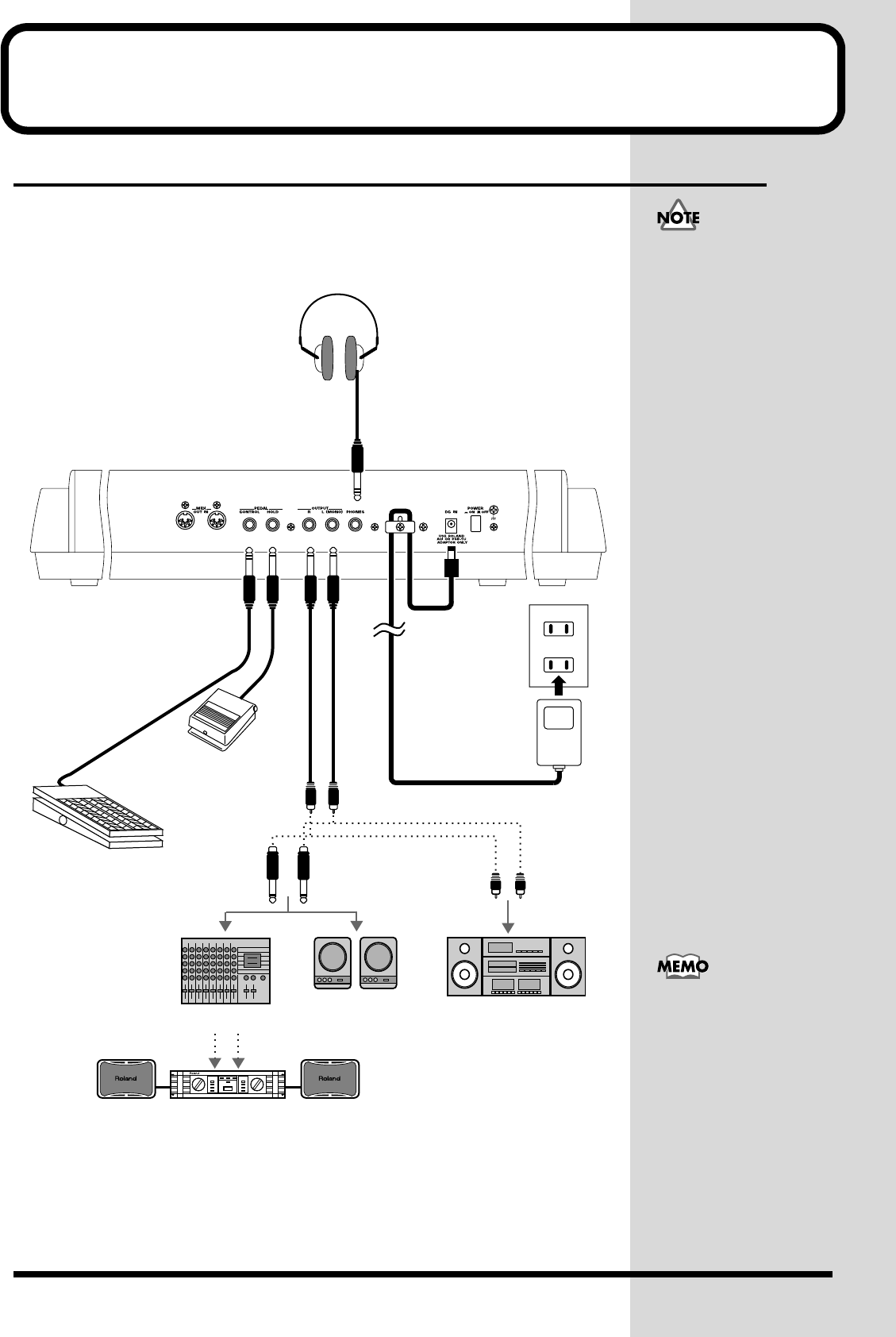
14
Getting ready
Connecting the JUNO-D to external equipment
The JUNO-D does not contain an amp or speaker. You’ll need to listen to it through
powered monitors, a mixer and connected monitors, a stereo system, or through
headphones.
Connect as follows when using the JUNO-D as a stand-alone device.
fig.q01-01.e
921, 924, 925
1.
Before starting the connection procedure, make sure that the power to all
devices has been turned off.
2.
Connect the supplied AC adaptor to the JUNO-D, and then plug its other
end into a power outlet.
Stereo headphones
AC adaptor
Audio
cable
Pedal switch (DP-2, DP-8)
or foot switch
(BOSS FS-5U)
Expression pedal (EV-5)
or pedal switch
Audio set etc.
Monitor speakers
(powered)
Mixer etc.
Power amp
Roland
• To prevent malfunction
and/or damage to
speakers or other
devices, always turn
down the volume, and
turn off the power on all
devices before making
any connections.
• To prevent the
inadvertent disruption
of power to your unit
(should the plug be
pulled out
accidentally), and to
avoid applying undue
stress to the AC adaptor
jack, anchor the power
cord using the cord
hook, as shown in the
illustration.
• Use only the specified
expression pedal (EV-5;
sold separately). By
connecting any other
expression pedals, you
risk causing
malfunction and/or
damage to the unit.
• Audio cables, MIDI
cables, and stereo
headphones are not
included. You will need
to purchase these items
from your dealer.
• In order to take full
advantage of the JUNO-
D’s performance, we
recommend using a
stereo amp/speaker
system, If you are using a
mono system, make you
connections to the
OUTPUT jack L (MONO).
• CONTROL PEDAL jack
can also accommodate
pedal switches.
JUNO-D_e.book 14 ページ 2004年6月11日 金曜日 午後1時21分


















